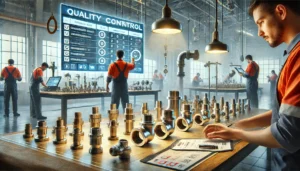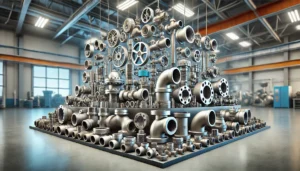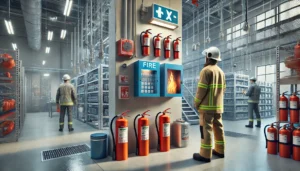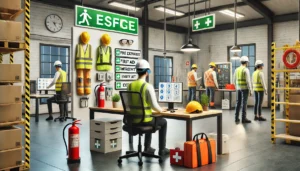Are you aware that a small leak in a pipe fitting can waste gallons of water daily? It seems that pipe fitting maintenance falls into the ‘set and forget’ category with many people, leading to serious water wastage. Contrary to popular belief, pipe fittings, like any other machines or mechanical systems, need attention from time to time if they are to be in good operating condition and last longer.
Not addressing a problem is a problem in itself and maintenance is all about preemptive action. Well maintained pipe fittings are critical devices in any piping system. Whether for domestic or public utility use, they ensure that fluids flow correctly and safely everywhere.
The Necessity of Regular Maintenance
Life Extension of Products
Taking care of pipe fittings helps in extending their lifespan, and therefore maintenance is crucial. Over time, fittings can suffer from wear and tear, corrosion, or sediment build-up. Multi-tier inspections and maintenance are the solutions to these challenges, allowing for minor issues to be solved before they snowball into giant problems. This regular care enhances the operational efficiency of the system as well as durability of the fittings.
Cost-Effectiveness
Consider maintenance to be an investment instead of a cost. Spending a little on regular maintenance wards off neglect pipe fitting issues which are likely to cause major leaks or bursts pipes later down the line and are extremely costly to repair. When a problem is taken care of at an earliest stage, the use of harsh repairs or replacements becomes limited. Regular maintenance ensures easier identification of potential problems.
Safety Aspects
The unsung hero of every problem, the safety aspect of regular maintenance is to be credited. Pipe fittings running amiss could very possibly result in water damage leading to mold growth, or worse claiming structural integrity of the building. In more severe scenarios within industrial settings the outcome could pose an even graver danger, hazardous material leaks. Knowing the seal integrity of pipe fittings gives that peace of mind the environment, health of the populace and structures is maintained.
Steps for Proper Maintenance Of Pipe Fittings
Scheduled and unscheduled inspections need to be a common practice. Here are some suggestions on how to do it:
- Look for Signs of Wear: Be on the lookout for formations of cracks, rust, or any other form of damage
- Check for Corrosion: Look out for areas of corrosion such as the ones on metal fittings.
- Test for Leaks: Any minor or major wet spots could very possibly indicate a leak.
Keeping pipe fittings clean is essential. Here’s how:
- Wipe Down Surfaces: Regularly clean the fittings’ exterior with a damp cloth to remove dust and debris.
- Use Appropriate Cleaners: For deeper cleaning, use cleaners suitable for the material of your fittings, like mild soaps for plastics or specific rust removers for metals.
- Avoid Harsh Chemicals: Don’t use harsh chemicals that can damage the fittings.
Sometimes, a repair or replacement is needed. Here’s when and how:
- Identify Worn-Out Parts: If parts show significant wear or damage, it’s time to replace them.
- Use the Right Tools: Always use the appropriate tools for repairs to avoid further damage.
- Quality Materials: Ensure that replacements are of good quality and compatible with your system.
Basic Troubleshooting Skills
Common problems include:
- Leaks: Usually indicated by dripping water or wet spots.
- Blockages: Look for reduced water flow or backups.
- Corrosion: Visible rust or discoloration on metal fittings.
DIY Fixes
- Tightening Fittings: Sometimes, a leak can be fixed by simply tightening the fitting.
- Clearing Minor Blockages: Use a plunger or a plumber’s snake for simple blockages.
- Rust Removal: For minor rust, apply a rust remover and scrub gently.
When To Call The Professionals
- Complex Issues: If the problem is beyond a simple fix or hard to identify.
- Major Leaks or Blockages: Large leaks or blockages that can’t be cleared easily.
- When in Doubt: If you’re unsure, it’s always safer to consult a professional.
Remember, regular maintenance and prompt troubleshooting can save you time and money in the long run and keep your pipe fittings in top condition.
Technical Skills for Pipe Fitting Maintenance
Essential Skills
To maintain pipe fittings effectively, you’ll need some basic technical skills:
- Understanding of Pipe Systems: Know the types of pipes and fittings, and how they work together.
- Basic Plumbing Skills: Skills like tightening, sealing, and replacing fittings are essential.
- Problem-Solving Ability: Being able to identify and solve issues like leaks or blockages.
Training and Resources
You can acquire these skills through various means:
- Workshops: Always check out widely available local workshops or community based classes teaching the basics of plumbing.
- Online Courses: Indeed, there are so many courses out there on freely accessible online platforms.
- Professional Training Courses: For those seeking comprehensive knowledge, these programs are useful.
Case Studies or Examples
Example 1: Leak Prevention in a Manufacturing Plant
- Situation: A scheduled checkup in a manufacturing plant showed minor leaks at multiple pipe fittings.
- Action: A maintenance team replaced the outdated fittings and plugged possible leak points in the floor.
- Result: This single action resulted in the major disruption in the manufacturing process and costly repairs not being required.
Example 2: Addressing Corrosion in a Residential Building
- Situation: During a walkthrough inspection of an older residential building, a number of screw type pipe fittings showed signs of severe corrosion.
- Action: The old fittings were removed, and new ones put in place. The pipes were treated to stop future corrosion.
- Result: This maintenance work helped in avoiding the major problem of water quality and damaging pipes leading to bursting for the safety and comfort of the residents.
These are just some of the practical examples where lack of attention towards maintenance and technical knowhow for pipe fitting maintenance led to leaving someone’s imagination roaming free regarding the importance of regular maintenance activities. Being proactive in maintenance can help avoid serious problems later and ensure that the efficiency and lifespan of the pipe systems is extended.
Advanced Maintenance Techniques
If you or someone you know has been doing pipe fitting maintenance, then you are certainly aware that there are advanced techniques and modern tools that can elevate your maintenance practices to a whole new level.
- Ultrasonic Leak Detection: This method makes it possible to detect leaks by measuring high frequency sound waves that instruments pick up in places that are very hard to access.
- Thermal Imaging: Thermal cameras can assist in the identification of problems such as overheating or blockages by locating distinct temperature differences.
- Predictive Maintenance Software: Some systems can analyze data to determine when a fitting is likely to fail. This makes it possible to replace fittings at the most optimal time.
- Corrosion Prevention Coatings: More modern coatings can be used to guard against corrosion on fittings which would increase the lifespan of the parts.
Adopting these techniques and tools can optimally improve the effectiveness and accuracy of maintenance work.
Conclusion
In summary, maintenance is the unsung champion of extending the lifespan and functioning efficiency of pipe fitting, and is performed regularly. We have covered the reasoning behind its importance, how to conduct one, basic troubleshooting, the essentials of servicing the equipment, and for those wishing to master the craft, modern tools and advanced techniques provide a thrilling frontier.
We now turn to you. How do you go about pipe fitting maintenance in your area? Do you have any tips or experiences that you would like to offer? Join us in the conversation as we aid each other in ensuring that pipe fittings remain functional and serve us well for years to come.










